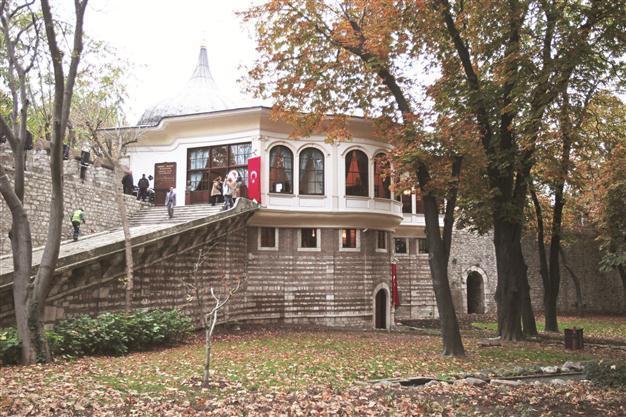Ottomans celebrate special occasions with good parade
NIKI GAMM ISTANBUL- Hürriyet Daily News

The Alay Köşkü in Istanbul is still in use today for exhibitions.
The Ottomans loved a good
parade. It was an occasion for the celebration of special events, a distraction for the people and a display of the might and wealth of the
empire. The first such
Ottoman procession was Fatih Sultan Mehmed II’s entrance into Constantinople immediately after the city had fallen in 1453. He went to St. Sophia Basilica and proclaimed it the city’s Friday or main mosque.
The sultan could be seen accompanied by soldiers, servants and palace staff on his way to and from Topkapı Palace as he was bound by strict protocol that ensured he was never alone.
Lady Mary Wortley Montague, in one of her letters from Edirne in 1717, was duly impressed by a parade she saw there. She described the parade on the occasion of Sultan Ahmed III going from his palace on the outskirts of that city to attend prayer services at, presumably, the Selimiye Mosque. The sultan was dressed in fox-lined green and was preceded by a guard of Janissaries, foot soldiers and the royal gardeners. He was mounted on a fine horse whose trappings were embroidered with jewels.
Six more horses were led behind, various items for his use and thousands of richly and colorfully dressed palace courtiers followed, “…perhaps there cannot be seen a more beautiful procession,” Montague reflected.
The grand vizier was bound by the same protocol and would be accompanied by soldiers and servants when going to and from the palace. And when a sultan died and a new queen mother took the place of the old one, she would be transferred from the so-called Old Palace, located where Istanbul University is now, to Topkapı Palace with great pomp and ceremony.
‘Without it, the sultan could not be a sultan’
Processions were held on many other occasions, such as the sword-girding ceremony at Eyüp, which was roughly the equivalent of the crowning of a new ruler in Europe. Without it, the sultan could not be a sultan. He would first receive the members of his court who would swear their allegiance and then be escorted by boat to Eyüp where he would be girded with the sword.
There would be processions for the birth of a new child in the imperial dynasty, and for the weddings of the sisters and daughters of the sultans. Religious festivals such as Ramadan and other such occasions also called for celebratory processions.
When the sultan went to war, there was a specific protocol for how the Army would proceed from the city on its way to battle. Travel writer Evliya Çelebi described in the 17th century how this procession of some 200,000 men would start from the imperial camp at dawn and continue until sunset, “all passing like a thundering sea.” Moreover it was witnessed by all the people who lived in Istanbul. And not to be outdone, the professional guilds, which numbered around 1,000 at this time, would be part of the profession as well as other groups ranging from booksellers to beggars and from camel drivers to menders of broken cups.
Professor Nurhan Atasoy has pointed out that after a decision to go to war was taken, a ceremony would be held in front of the Gate of Felicity, inside Topkapı Palace. Just prior to the Army’s departure, visits would be made to the graves of important people. If the sultan himself were going, his imperial tent complex and all other necessities would be sent ahead to the place where the first night would be spent. The procession, led by the grand vizier and the şeyhülislam, would then leave the city followed by the ministers of state and all other officials deemed necessary for the campaign.
If the sultan were not part of the procession, he could observe the beginning and endings of them from the chambers that were located on top of the First Imperial Gate because it was here that they would gather and disperse. Later, the Alay Köşkü (Procession Mansion) would be built in the main palace walls across from the Bab-i Ali where the grand vizier had his offices. The women of the harem could also watch from behind the intricate latticed windows. The Alay Köşkü is still in use today, but only for exhibitions, since parades no longer go the imperial way.
